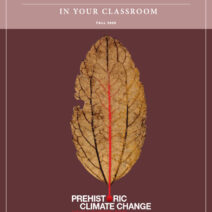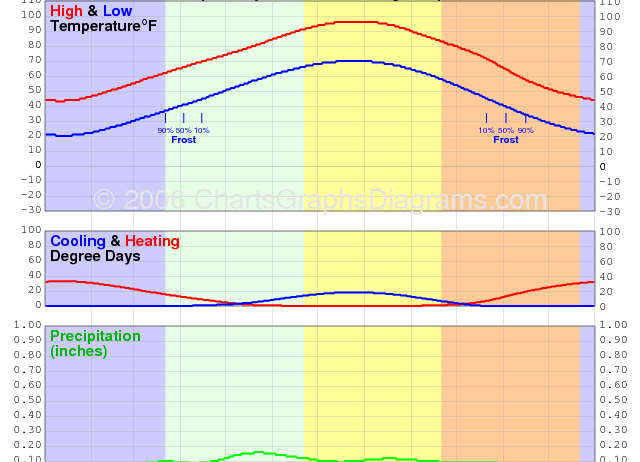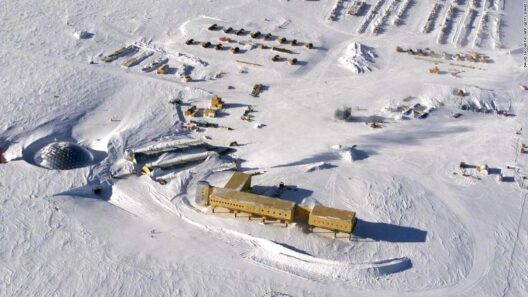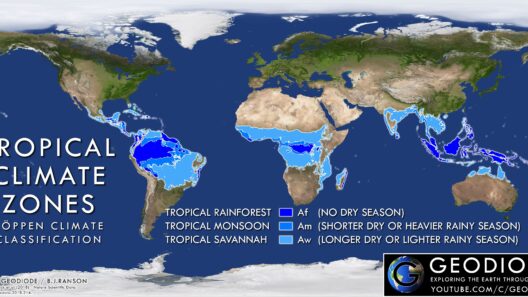The Great Plains region, often affectionately deemed “The Heartland of America,” stretches across parts of Canada and the United States. Its vast expanse is characterized by its unique climate, which presents a distinctive tapestry for agricultural endeavors and influences the livelihood of thousands of residents. But what exactly is the climate in the Great Plains region? And how does it impact the farming practices amidst the tempestuous interplay of storms and illumination from the sun?
The climate in the Great Plains can be delineated as a mix of semi-arid and continental influences, creating an environment marked by its extremes. Annual precipitation typically ranges from 10 to 30 inches, with significant variations depending on geographical positioning. For instance, the eastern edge of the region experiences a more generous share of rainfall compared to the arid western portions. This fluctuating precipitation is crucial as it serves as the lifeblood of the agricultural sector, underpinning everything from wheat fields to corn plantations.
The summer months are particularly telling of the Great Plains’ climatic character. Temperatures can soar into the upper nineties, with occasional spikes even higher. The relentless sun beats down on the vast landscapes, making proper irrigation a vital asset for farmers attempting to cultivate their crops. Rainfall during the summer is not guaranteed, thereby presenting a precarious challenge for those dependent on it. Furthermore, the dry heat can exacerbate evapotranspiration, diminishing the moisture available for crops in the soil.
In contrast, winter ushers in a distinctly different experience. With frigid air masses sweeping down from Canada, temperatures can plunge dramatically, often reaching sub-zero levels. Snowfalls are common, especially in the northern reaches of the region, creating a period of dormancy for many agricultural activities. Interestingly, this cold stretch can also be beneficial; snow acts as an insulating blanket for the soil, helping to maintain moisture levels as it melts come springtime. Yet, the bitter cold presents its own unique challenges, such as delayed planting and the need for robust crop varieties that can withstand such conditions.
Spring, a time of renewal, offers its own set of climatic features. Tornadoes, often dubbed as nature’s rollercoasters, frequently emerge during this transitional phase. The Great Plains have earned a notorious reputation as Tornado Alley, with the tumultuous confluence of warm moist air from the Gulf of Mexico and cold dry air from Canada. While these tornadoes are a fearsome force with the power to obliterate, they also contribute to the adaptive resilience of farmers. Learning to navigate the tempestuous weather patterns becomes a requisite skill for year-round cultivation.
So, what is a farmer to do in the face of these climatic realities? Adaptation is the name of the game. Farmers are investing in technology and sustainable practices to bolster resilience against both drought and flood. For instance, precision agriculture—utilizing data and advanced technology—has emerged as a game-changing methodology for many in the region. It allows for a more tailored approach to irrigation, fertilization, and pest management, all while minimizing waste and optimizing outputs.
Moreover, the ingenious use of cover crops and crop rotation can both enhance soil health and mitigate the extremes of climate. Cover crops, grown primarily to improve soil quality rather than for harvest, can aid in retaining moisture and reducing erosion. Alternating between different crops across seasons can likewise replenish soil nutrients, which is particularly vital considering the monoculture practices that dominated the agricultural landscape for decades.
The question arises: As climate patterns grow increasingly unpredictable and the specter of climate change looms large, how can the Great Plains maintain its agricultural backbone? The challenge demands comprehensive action. Collaboration between farmers, researchers, and policymakers is paramount in developing resilient strategies that consider both environmental and economic factors. These partnerships can inspire innovative solutions, be it through government incentives for sustainable practices or research into crop varieties that thrive in less-than-ideal conditions.
As we delve deeper into the implications of climate in the Great Plains, one must ponder the notion of community. The resilience of this region relies not solely on individual farmer’s efforts but also on collective action and knowledge-sharing. Regular engagement in workshops, educational programs, and town hall meetings can foster a culture of adaptation. As the saying goes, “It takes a village,” and in an era where both environmental and economic stability is at risk, nurturing a sense of community could be pivotal.
In conclusion, the climate in the Great Plains unfolds a narrative of challenges and opportunities. From the scorching summer sun to the biting winter winds, each season carries significant implications for agriculture and the communities that thrive within this diverse ecosystem. The intersection of storms and sunlight reveals a deeper connection to the fabric of farming life, inviting stakeholders to innovate, collaborate, and ultimately persevere.
As the question lingers in the back of our minds—what will it take for the Great Plains to adapt amid the tempest? The answer lies within the collective resolve of its people, standing firm against the ever-changing tides of climate. The story here is one of resilience, adaptation, and importantly, hope.








